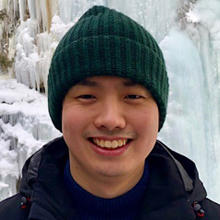An interview with Masanori Asai
March 2019
Postgraduate member Masanori Asai is studying at Imperial College London. Here, he tells us about his research on the development of a non-mammalian TB infection model using the larvae of the insect Galleria mellonella (greater wax moth), how he manages the risks of working with the pathogen and why he joined the Microbiology Society.

Tell us a little about your research.
I am a NC3Rs-funded PhD student at Imperial College London. My project focuses on the development of a non-mammalian TB infection model using the larvae of the insect Galleria mellonella (greater wax moth). Using this model, I am studying the role of innate immunity during the early stages of TB infection; and as a high-throughput drug screen for novel TB therapeutics. I hope that this model will serve as a bridge between in vitro and mammalian drug studies, thereby greatly reducing the number of mammals used in TB research.
Why is Mycobacterium tuberculosis such a challenging organism to work with?
Mycobacterium tuberculosis is a challenging pathogen to work with for a number of reasons, but the most challenging aspect is safety. As a category C pathogen, work is limited to those in a negatively pressured biosafety level 3 facility (BSL3). Therefore, research involving live pathogenic M. tuberculosis is limited to institutions with such facilities (although TB research can be done with surrogate Mycobacterial species). Beyond safety, as a slow-growing pathogen, obtaining data as colony forming units can take 2–3 weeks. Conventional animal infection studies (e.g. mice) can take over six months and requires a further specialised BSL3 facility with animal housing.
How do you manage the risks of working with this pathogen in the lab? Do you have to take extra precautions?
To manage the risk in our lab, each lab user is trained for six months and must pass an oral exam before full access is granted. We wear appropriate clothing and follow BSL3-specific standard operating procedures, which minimise the risk of exposure and contamination of both yourself and the lab. All work must be carried out in a Class 1 Safety Cabinet and waste must be carefully disposed of, following strict guidelines. We regularly carry out refresher meetings and emergency exercises to ensure that all users, regardless of the frequency of their lab use, are accustomed to the safety procedures.
What encouraged you to pursue a career in the field of microbiology?
My interest in microbiology originally stemmed from learning about the diversity and abundance of microbes at school. Towards the end of my undergraduate studies, I decided to pursue a career in studying infection and immunity, as I was made more and more aware of the impact of infectious disease in society and the rising issues of antimicrobial resistance.
Why did you join the Microbiology Society?
I joined the Microbiology Society to share research, create opportunities for collaboration and public engagement, with a greater aims to increase awareness of microbiology and its values to society.
Are you a member and interested in sharing stories about your research journey? Email [email protected]


